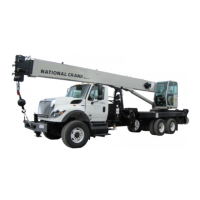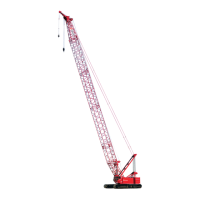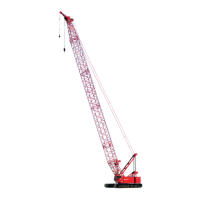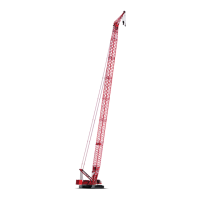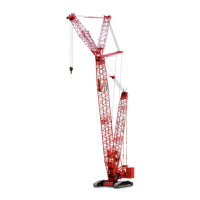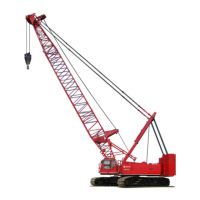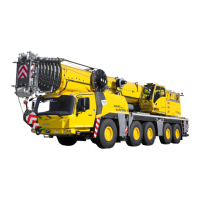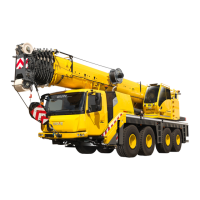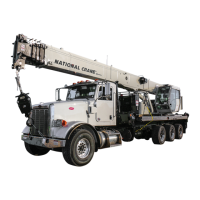Manitowoc Published 09-10-14, Control # 065-24 1-73
14000 SERVICE MANUAL INTRODUCTION
Back Hitch Pin Cylinders
See Figure 1-32, Figure 1-41, and Figure 1-42 for the
following procedure.
During normal operation back hitch pins solenoid valve is
disabled where cylinders are extended with keeper pins
holding pins in place. Rod end port of cylinder is open to
tank. Back hitch pins switch is on setup remote control. Back
hitch pins cannot be disengaged until keeper pins are
removed. Pressure source for operating back hitch pins
cylinders is charge pressure from drum 3/left travel pump.
Power is available to setup remote control when cable is
plugged into W36 receptacle on node 3, remote control on is
selected on remote control function screen, and engine is
running. Remove existing W36 cable and plug setup remote
cable into receptacle. Pressing power button completes
power supply circuit to setup remote control switches.
When back hitch pins switch is in engaged (normal) position,
cylinder rods are extended to engage back hitch pins.
Hydraulic fluid from rod end of cylinders returns to tank.
When back hitch pins switch is placed in disengage position
and held, an input voltage is sent to node 1 controller.
Node 3 controller sends a 24 volt output to enable back hitch
pins solenoid HS-26 and shifts valve to disengage position.
Hydraulic charge pressure at approximately 350 psi (24 bar)
flows from drum 3/left travel pump to rod end of back hitch
cylinders, retracting cylinder rods to disengage back hitch
pins. Hydraulic fluid from piston end of cylinders returns to
tank. When boom hinge pins switch is released, valve
returns to engaged (normal) position.
FIGURE 1-41
14CSM1-132
Cable
Setup Remote Control
W36
Node 3
Back Hitch Pins Disengage
Power
Emergency
Stop
Gantry Cylinders Raise
Gantry Cylinders Lower
24 Volts
AI-13
DI-7
AI-11
AI-12
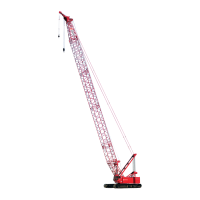
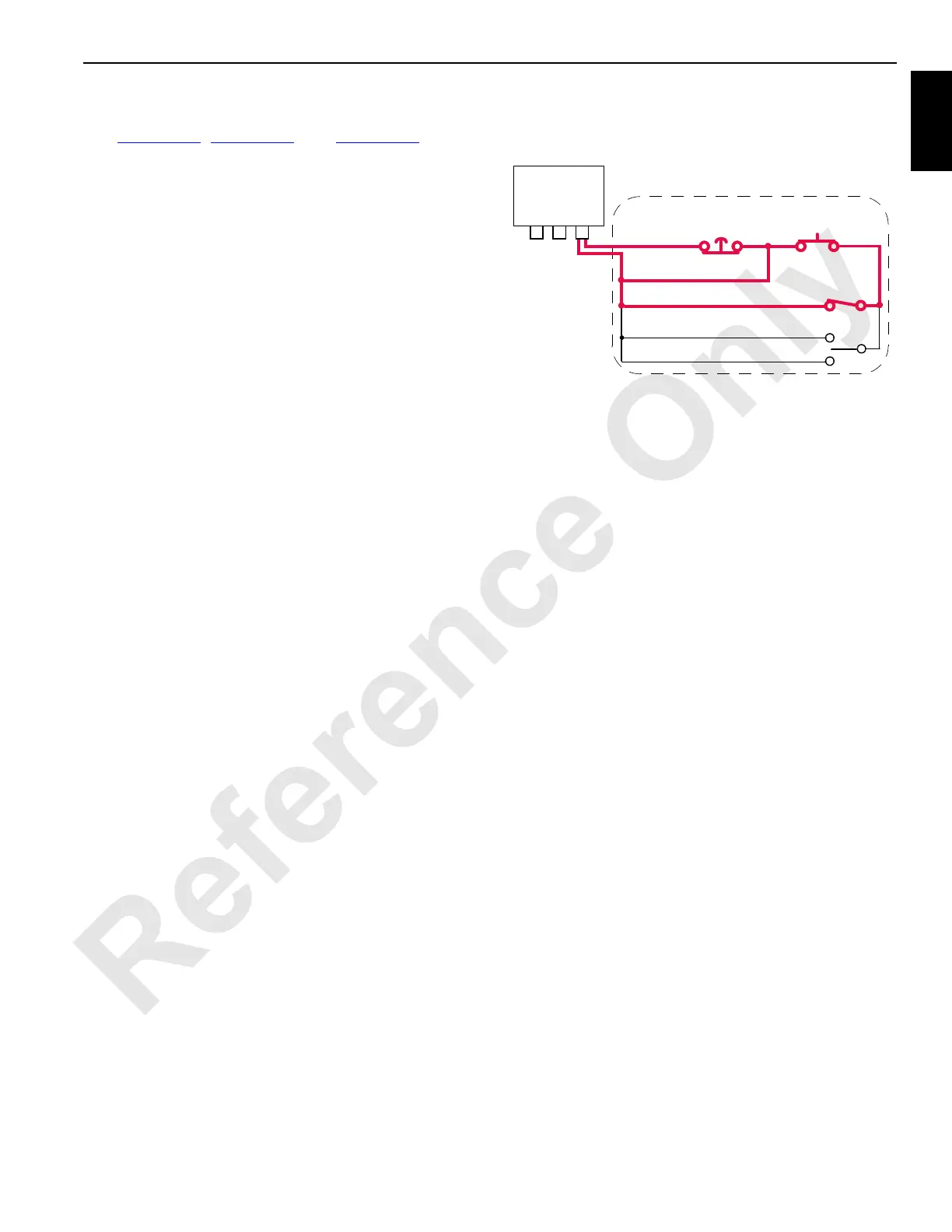